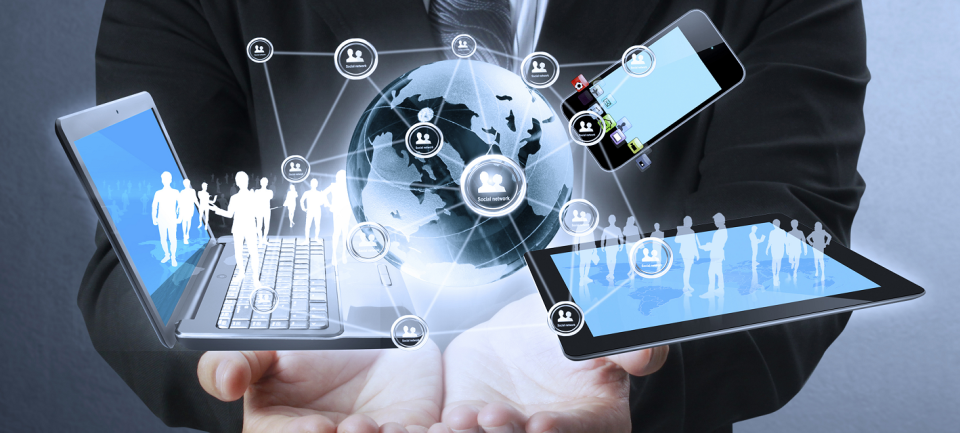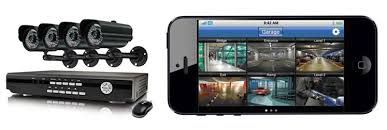Controlling Objects With A Smartphone: Will it Be The Norm?
Unless you're part of the minority in the western population that doesn't own a smartphone, you'll be very familiar with the convenience that smart objects create, and how they save time and effort, creating shortcuts for almost every aspect of our daily lives.
Many of us couldn't imagine our lives without our beloved smartphones, and whether or not we feel comfortable admitting it, most of us would be lying if we said we could easily spend a day without it. However, even though smartphones have become such crucial parts of our society and culture, they really haven't been around that long.
While the first mobile phone was invented in 1876, it took just under 100 years for the very first phone call to be made on a mobile phone in 1973. It then took another 10 years for the first mobile phone to be made available to the public, when the very basic Motorola DynaTAC was sold in 1983.
The process of designing, producing and releasing the first mobile phones to the market seemed to be a considerably slow process, especially when we think about how much they have developed since the first mobile phone in 1983.
The first mobile phone only had very standard functions, as it was only used for making phone calls. The exterior was bulky and they measured up at over 14 inches tall. When we compare this to what we're used to now with our sleek, thin and relatively smaller models, it goes to show how much has changed just visually over the past 30 years.
And of course, that's not to mention the way mobile phones have changed and developed technically. Before the year 2000, the very idea of being able to connect our mobile phones to the internet seemed bizarre, but now we're used to nothing else.
Mobile phones as we know them not only connect to the internet but they're filled with time-saving apps, different messaging and communication services and cameras, and we're used to being able to share anything to social media instantly, and access whatever we like at the tap of a button, or even just with our voice.

This is because we're part of a generation programmed with '', and this doesn't stop at our mobile phones. We're now given the option of connecting to the internet through televisions, tablets or iPads and even our watches, all because of an ideology known as 'the internet of things'.
This idea of connecting everything to the internet makes us question what's next, and how long will it take us to expect to connect all of our everyday objects, appliances and devices digitally to the internet and online accounts?
If we can connect something as simple as a watch to the internet, then what's stopping us from syncing things such as our dishwashers, fridges or washing machines with our online identity?
What would this mean for the future of using household objects, and what are the potential benefits?
Many household appliances and objects are already fitted with smart technology, although many of these haven't become popular yet for various reasons.
Examples of smart technology in our homes include smart thermostats which can be controlled, used and personalised through your smartphone. This allows users to set their preferences through their phones, and change any settings when and where they like. Due to the smart technology, it's believed that it would monitor your activity to learn your preferences very quickly.
Another example includes CCTV; we all know why security cameras are important, but recently smart CCTV has become more popular. This allows you to view any footage from your smartphone, laptop or PC at any time, and you can monitor anything live instead of having to wait until after it's filmed.
Other perhaps less common examples of smart technology include household appliances being made 'smart', so that we can control them through our smartphones, or other digital devices.

For example, some manufacturers of coffee machines and slow cookers have jumped on the smart technology bandwagon by allowing users to download an app that is connected to the machines. This means that they can brew a cup of coffee from the comfort of their bed without having to move to make it themselves, or cook a meal while they're at work, ready for when they get home.
Bigger household appliances are also beginning to join the smart technology craze. Imagine if your refrigerator, dishwasher or washing machine had its own online identity where you could create an account which automatically monitors their settings, usage and preferences.
This may be beneficial because while this technology is expensive, it's designed to give users the best, most convenient experience, and they claim to save money in the long-run.
Smart dishwashers and washing machines aim to monitor your water and energy usage so that it can advise you on how to use it more economically and in a more environmentally friendly way, to help cut down your bills and annual usage.
Smart vacuum cleaners are another smart trend that is yet to become mainstream as it's designed as a robot-like device that vacuums your house for you, whether you're there or not, as it can be controlled from your phone. Using cameras and sensors, they map and memorise the layout of your house in order to navigate around your rooms and clean the floors efficiently and regularly.
Smart thermostats are popular because they're arguably more accurate and while you spend more on the actual product, they claim to save roughly 20% on average on yearly heating and cooling bills, subsequently saving money in the long-run.
Many of us only think of the time-saving benefits that come with smart objects, and the convenience they bring. However, many of these products aim to not only save time and effort, but they also monitor your personal usage so that you can potentially save money from bills and use the devices in a more energy-efficient way.
How likely is it that this will become mainstream?
Some developers predict that eventually all of our appliances will be produced with smart technology, and that it will become the norm just like other smart objects have. At one time, we wouldn't be able to imagine everybody having smartphones, smart TVs or tablets, but they've become common at an incredibly fast pace.
One of the main reasons that this industry isn't hugely popular is because of the cost. The smart products that are currently available on the market are all much more expensive, and the reality is that not many people are as inclined to spend such a large amount of money on them when they can buy a cheaper, more basic version, especially if they already own them.
Even though many of these smart trends and innovations claim to help save money in the long-run, this isn't definite and fewer people are likely to want to spend large amounts of money at one time, even if there's a chance they'll save money on bills in the long-term.
Another worry about connecting everyday objects to the internet include security risks. We're constantly bombarded with stories about cyber-crimes, and a lot of people would be put off by the risk of having their personal accounts hacked in to.
Furthermore, people may be intimated by the complexity of the smart technology used because they sound so complex. The thought of having to install and work out how to use multiple apps to connect to each of their household objects may put people off from trying them.
However, companies such as 'Evrythng' are working on solving this issue through the use of just one app that can potentially control multiple objects in your home. This may make the whole idea seem less complex and daunting, and could attract more people to the trend.
More things need to be done to make the idea of connecting our houses to the internet seem less further away, and perhaps the biggest issue is making it more affordable. However, the growth in smartphones and other smart objects makes this innovation seem more promising and plausible, and in just a few years' time we might be wondering how we'd manage without robot-like smart objects dominating our homes.
